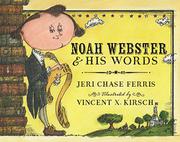Next year I am taking on a new adventure....Kindergarten! I will be the LIFT teacher in my district. This stands for Literacy Initiative Focused Teaching. I will be teaching literacy to Kindergartners in the morning and afternoon that will be in addition to their regular K class. I couldn't be more excited!!
I feel like I've been in Kindergarten boot camp this summer. I've been reading everything I can to prepare for my new journey. I hit the PD book jackpot when Mandy Robek graciously lent me her fantastic professional reads. But along with PD reads I read lots of new to me picture books to find some great titles to share with my readers. I had the perfect reading partners this summer, my own almost Kindergartner (1 more week!) and my 3 year old.
I want my beginning of the year read alouds to engage students. I want them to laugh, giggle, shriek, and TALK! I want books that are simple in format, but also lend themselves to big ideas and good discussion. I want to find books with a great beat, music for the ear. I want to find books that lend themselves to drama and storytelling re-enactments. I want books that make kids come home and talk about them. Finally, the best books are ones that my K readers will ask for again and again and again. They will have characters that will remembered and celebrated in our classroom.
Thank you for organizing the event Cathy and Mandy! I love reading about everyone's posts about great books.
1. The Watermelon Seed by Greg Pizzoli
I LOVE this book. It will remind you of I Want My Hat Back, Simple in format, but leads to great conversation and laughter. It is an engaging story about an alligator who worries after he eats too many watermelon seeds. He finally solves his problem by burping up the seeds. What Kindergartener wouldn't love this plot solution? This book is great for teaching fiction story structure, inferring feelings of the main character, and retelling through drama. I am hoping my K readers want to re-enact this story with each other. It also has great sound words to notice if you are reading for author's craft. It's one I think you could read again and again.
2. The Most Magnificent Thing by Ashley Spires is a great story for any grade level. It shows themes of perseverance, grit, hard work, and creativity. It is the perfect beginning of the year read aloud to guide discussions about the struggle that occurs when trying something new.
3. Almost by Richard Torrey is one I will share with my Kindergarteners to build confidence about the many things we can almost do. We will talk about how if we something is hard, we may just not feel strong at it YET. I see us turning some of our almost statements into I Can statements.
4. Alligator Baby by Robert Munsch is my 3 year old's favorite book. It will make kids laugh. I read it to her preschool class last week and kids loved interacting with the story. We shrieked together each time a new animal baby was brought home. This is a good story for making predictions and inferring character's feelings.i
5. Garbage Trucks by Terri DeGezelle is a great nonfiction book for our classroom library. It is simple in format and one that we can read together to collect facts about the monster trucks.
7. National Geographic's Book of Animal Poetry is full of amazing poems and extraordinary photographs. I love using these poems to explore language and vocabulary while also learning facts about animals.
8. Another great non fiction find is Little Kids First Big Book of Animals by Catherine D. Hughes. The photographs are excellent and the animals are separated by habitat. We can begin learning how to read the pictures by observing these animals in their habitats. It will also help us learn about features of non fiction.
9. I LOVE Elephant and Piggie books by Mo Willems! I bought a 20 book set for our library. I think they will be great shared reads. I love the themes of jealousy, friendship, sharing to name a few. I think they will be a great books to practice beginning reading skills. We can also use these books as mentors for our own writing. We will study Mo Willems' to see how he uses author's craft and how his illustrations help tell the story.
11. I had to edit this post and add just one more I had forgotten I wanted to add....
I LOVE Pete the Cat and His Magic Sunglasses! This is a perfect beginning of the year read for any age. The message is all about looking at things in a whole new way with a positive attitude. When Pete puts on his sunglasses his mood begins to change as he looks at situations. I hope our communit can work together to focus on the good in a day!












